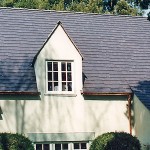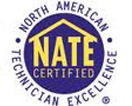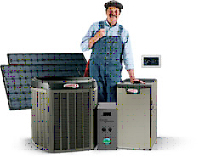Lennox Rebate
Receive up to $1,350 when you purchase the Lennox® Ultimate Comfort System
Rebate Disclaimer: Rebate requires purchase of qualifying items between September 7 through November 27, 2020. Qualifying items must be installed by December 4, 2020. Rebate claims (with proof of purchase) must be submitted (with proof of purchase) to www.lennoxconsumerrebates.com no later than December 18, 2020. Rebate is paid in the form of a Lennox Visa® Prepaid card. Card is subject to terms and conditions found or referenced on card and expires 12 months after issuance. Conditions apply. See www.lennox.com/terms-and-conditions for complete terms and conditions.
Sheet Metal Workers Local 104 Rebate

Sheet Metal Workers Local 104 is offering rebates for Residential Furnace and Air Conditioning. By choosing a signatory contractor and members of Sheet Metal Workers’ Local Union 104 to care for your heating and cooling needs, you not only qualify for the rebates listed, you are also assured the work will be performed by the most skilled personnel in the industry. January 2, 2020 – December 31, 2020.
Replace Furnace and add Air Conditioning system – $250.00
Replace Furnace and existing Air Conditioning system – $250.00
Replace or add new Air Conditioning system – $200.00
Replace or add new Furnace – $200.00
Replace Wall Heater – $100.00
1 Zone Ductless System – $120.00
Attic Ventilation

Proper attic ventilation is a necessity to prevent excessive moisture build-up from condensation in the winter, and preventing excessive heat build-up in the summer. Both conditions can impact the life of your roof and the comfort of your home. High attic temperatures, even with proper insulation, can result in a home that is unnecessarily hot in the summer, and difficult to cool.
For typically pitched attics, the requirement is one square foot (net free area) of ventilation for every 150 square feet of attic floor area, with half of the ventilation high, and half low. This, however, does not guarantee an adequately vented attic. It is important that vents are properly located and installed to insure proper ventilation.
Installing vents at both eaves and ridges allow a “chimney effect” to promote the movement of air up and out of the attic. Eave vents alone will keep heat and moisture trapped in the attic.
The best time to address attic ventilation issues, of course, is when installing a new roof. For existing problem attics, however, ridge or eyebrow style vents can be retrofit into an existing roof system.
Attic exhaust fans are an easy and affordable way to clear hot air from an attic when it is most needed. These are available as line voltage fans with thermostat controls to turn the fan on when the attic gets hot, and turns it off when the temperature drops approximately 15 degrees. For homes with the proper exposure, we have solar powered fans that operate whenever the sun shines on the built-in or remote solar panel.
Please contact us to provide your attic ventilation solution.
Nate certified

Congratulations to our employees Nick Reno and Joe Bloomer for successfully completing their NATE certification on 12/20/2009. They are the latest addition to our growing list of employees that have taken this rigorous training and testing program.
What is NATE?
NATE stands for North American Technician Excellence, and it’s the only nationwide certification program accepted by the entire HVACR industry — contractors, manufacturers, and the Air Conditioning Contractors of America. NATE is a voluntary certification program designed to ensure that qualifying technicians have a core set of competencies and can be trusted by the consumers who hire them. NATE is the culmination of several years worth of work by ACCA and other industry organizations to establish one single, nationwide certification.
Why is NATE certification by our employees important to you?
The NATE certification is rigorous and voluntary. There are other third-party certification programs out there, but they have suspiciously high “pass” rates. NATE has the lowest pass rate and is the only nationwide certification program that is endorsed by the HVACR industry across all levels. Technicians, contractors, manufacturers, utilities, educators, wholesalers and leading industry trade associations support NATE. And industry organizations such as ACCA have helped develop the tests to ensure they maintain high professional standards.

